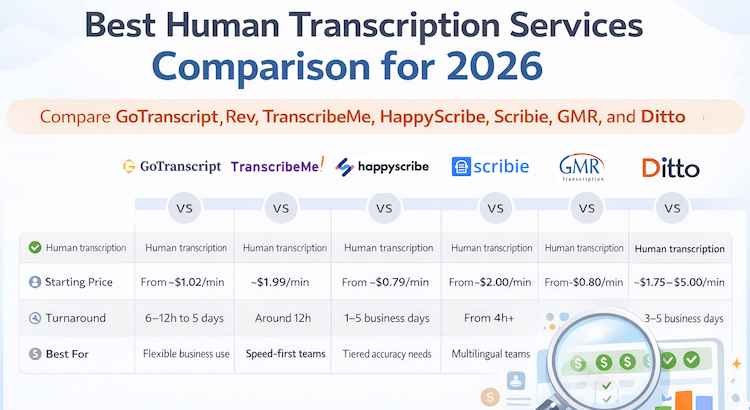How to Study More Efficiently: Proven Tips for Better Learning
Do you want to get better grades without spending extra hours with your books? Many students struggle to make the most of their study time. This guide shares simple, research-based strategies to help you study smarter, not harder.
Why Good Study Habits Matter
- Strong study habits can improve grades and reduce stress.
- Students who set up routines and use active learning methods score higher on exams (National Survey of Student Engagement, 2021).
- Having the right tools, like quality notes and transcripts, leads to better understanding and long-term memory.
Step 1: Prepare Yourself and Your Environment
Before you start, set yourself up for success by making a plan and choosing a suitable study space. The right environment helps you focus.
- Make a detailed study plan that lists what to review and when.
- Pick a quiet space with minimal distractions—avoid TVs, loud music, or busy rooms.
- Gather all your supplies, such as textbooks, notebooks, and highlighters, before you start.
- Join a study group if you learn better with others. Practice exams are also helpful for checking your progress.
Tips to Stay Focused
- Turn off notifications on your phone or use apps that block distractions.
- If you get distracted at home, try studying at a library or coffee shop.
- Stay positive—students who believe they can succeed are more likely to perform well (American Psychological Association, 2020).
Step 2: Manage Your Study Time Wisely
Don’t cram hundreds of pages the night before a test. Break your study time into smaller chunks, which helps you remember information better.
- Study for 25–30 minutes, then take a quick 5–10 minute break. This is called the Pomodoro Technique and is proven to boost focus (Cirillo, 2018).
- Repeat this cycle several times, then take a longer break.
- Set realistic goals for each session, such as finishing a chapter or making flashcards.
Practice by Quizzing Yourself
- Test yourself with flashcards or mock quizzes—retrieval practice is more effective than simply rereading notes (Dunlosky et al., 2013).
- Mix up questions rather than repeating the same ones. This keeps your brain active.
- Use memory games and involve more senses by reading things aloud or drawing diagrams.
Step 3: Capture and Use Every Word—Transcribe Your Lectures
It can be hard to write or type every important point during class. Many students miss key information while taking notes.
- Record lectures on your phone or a digital recorder (make sure your teacher allows it).
- Turn those recordings into accurate, readable notes by using transcription services.
- Review transcripts to catch details you missed. Reading a transcript helps you remember more and study faster.
- If you need quick results, consider automated transcription options, which deliver results in minutes.
Effective Note-Taking During Lectures
- If you prefer not to write in class, focus on listening and recording important points.
- After class, organize your notes using the transcript so you have a complete record of what was discussed.
- Use your lecture transcripts to prepare for finals or create study guides.
Step 4: Record and Dictate Your Ideas
Great ideas often strike when you’re talking with friends or brainstorming, not just while sitting alone.
- Instead of stopping to write, record your thoughts using a voice recorder or phone app.
- Later, use a professional transcription service to turn your recordings into notes you can review and study from.
- This method keeps your insights safe and easy to review when it’s time to prep for tests.
Step 5: Don’t Just Reread—Make Your Notes Work for You
Simply reading your notes over and over isn’t enough. Use them actively to help your memory.
- Write summaries or outlines of your notes to highlight key information.
- Teach a friend about a subject—explaining a topic out loud helps you learn it better (National Training Laboratories, 2019).
- If you have a friend’s notes, put them in your own words or read them aloud and record the audio for transcription.
- Automated transcription makes this step fast and accurate.
Step 6: Use Professional Transcription for Better Study Materials
Transcribing recordings yourself takes a lot of time. It can take up to 10 hours to transcribe an hour of audio by hand!
- Professional transcription services save hours and provide you with accurate, easy-to-read notes.
- Let experienced transcribers handle the hard work so you can spend more time studying and less time typing.
Extra Help for International or Multilingual Students
- Use text translation services or audio translation services to study materials in your own language.
- Get transcription proofreading services to ensure your notes are clear and error-free.
GoTranscript: Your Partner in Better Studying
Whether you need fast, accurate transcription, AI-powered solutions, or closed captioning and subtitling services, GoTranscript can help. Our services save you time, boost your learning, and make it easier to review any lesson. Check out our transcription pricing and captioning rates to find affordable solutions. Ready to get started? Order your transcript or captions today to elevate your study routine!



















 Verified Order
Verified Order